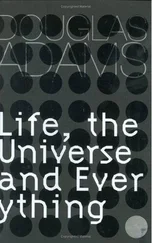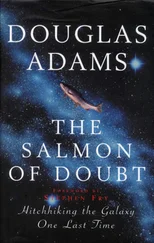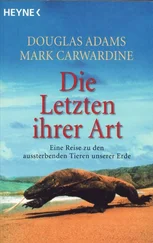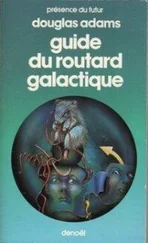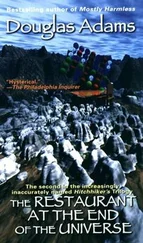Douglas Adams - Last chance to see
Здесь есть возможность читать онлайн «Douglas Adams - Last chance to see» весь текст электронной книги совершенно бесплатно (целиком полную версию без сокращений). В некоторых случаях можно слушать аудио, скачать через торрент в формате fb2 и присутствует краткое содержание. Жанр: Фантастика и фэнтези, на английском языке. Описание произведения, (предисловие) а так же отзывы посетителей доступны на портале библиотеки ЛибКат.
- Название:Last chance to see
- Автор:
- Жанр:
- Год:неизвестен
- ISBN:нет данных
- Рейтинг книги:5 / 5. Голосов: 1
-
Избранное:Добавить в избранное
- Отзывы:
-
Ваша оценка:
- 100
- 1
- 2
- 3
- 4
- 5
Last chance to see: краткое содержание, описание и аннотация
Предлагаем к чтению аннотацию, описание, краткое содержание или предисловие (зависит от того, что написал сам автор книги «Last chance to see»). Если вы не нашли необходимую информацию о книге — напишите в комментариях, мы постараемся отыскать её.
Last chance to see — читать онлайн бесплатно полную книгу (весь текст) целиком
Ниже представлен текст книги, разбитый по страницам. Система сохранения места последней прочитанной страницы, позволяет с удобством читать онлайн бесплатно книгу «Last chance to see», без необходимости каждый раз заново искать на чём Вы остановились. Поставьте закладку, и сможете в любой момент перейти на страницу, на которой закончили чтение.
Интервал:
Закладка:
The news from Mauritius has been more mixed. The kestrels are doing well and Carl believes that there could now be as many as a hundred of them in the wild, including twelve breeding pairs. However, the population of truly wild pink pigeons has dropped to fewer than ten. Some of the pigeons that have been bred in captivity are being released again. So far, they have escaped the hunters and appear to be doing well.
As for the echo parakeets, at least one of them has died since we saw them, though some of the others have been attempting to breed. In November 1989, Carl found a parakeet nest with three eggs inside. One of these mysteriously disappeared soon afterwards, so he decided to risk removing the others to the captive breeding centre for safe-keeping. Both eggs hatched successfully and the chicks are fit and well.
Perhaps most important of all (for non-ornithologists) the wild population of Rodrigues fruitbats has just passed the one thousand mark.
In contrast, after the radio series had been broadcast, we received a disturbing letter from a couple who had been working in China :
Dear Douglas and Mark,
We enjoyed the Yangtze dolphin programme - but listened with a touch of guilt! We recently spent three months working in a number of factories in Nanjing . We had a wonderful time with the people and ate well. To honour us when we left, one of them cooked a Yangtze dolphin, so really there should be 201.
Sorry about that.
Yours,
PS Sorry, it was two dolphins - my husband reminds me that he was guest of honour and had the embryo.
There is probably little hope of saving the dolphins in the Yangtze river itself, despite all the time and effort invested in protecting them. Perhaps in semi-captivity, in the reserve at Tongling and the new one at Shi Shou, they will stand a chance - though it could never be the same as being wild and free. Meanwhile, of course, the noise and pollution continue.
No one knows how many other species are this close to extinction. We don't even know how many species of animals and plants there are altogether in the world. A staggering 1.4 million have been found and identified so far, but some experts believe that there are another 30 million yet to be discovered. It's not surprising when you consider that we know more about the surface of the moon than we do about parts of our own planet. Many animals and plants are disappearing even before we are aware of their existence, perhaps hidden away somewhere in the depths of an unexplored sea or in a quiet corner of a tropical rain forest.
And it's not only the tiny, obscure creatures that have managed to escape our attention. There have been some exciting new discoveries in the rainforests of Madagascar , for example, since Douglas and I were there looking for the aye-aye in 1985. Field researchers have found two new species of lemur: one, called the golden bamboo lemur, has beautiful golden eyebrows, orange cheeks and a rich reddish-brown coat; the other has a shock of golden orange on the top of its head and has been named the golden-crowned sifaka.
Both lemurs are extremely rare - and virtually unknown. What roles do they play in Madagascar 's rain forests? Do they have any direct relevance to our own lives? What are the main threats to their survival? We don't know. They could become extinct before the experts learn enough to save them. Wildlife conservation is always a race against time. As zoologists and botanists explore new areas, scrabbling to record the mere existence of species before they become extinct, it is like someone hurrying through a burning library desperately trying to jot down some of the titles of books that will now never be read
Extinctions, of course, have been happening for millions of years: animals and plants were disappearing long before people arrived on the scene. But what has changed is the extinction rate. For millions of years, on average, one species became extinct every century. But most of the extinctions since prehistoric times have occurred in the last three hundred years.
And most of the extinctions that have occurred in the last three hundred years have occurred in the last fifty.
And most of the extinctions that have occurred in the last fifty have occurred in the last ten.
It is the sheer rate of acceleration that is as terrifying as anything else. We are now heaving more than a thousand different species of animals and plants off the planet every year.
There are currently five billion human beings and our numbers are continually growing. We are fighting for space with the world's wildlife, which has to contend with hunting, pollution, pesticides and, most important of all, the loss of habitat. Rain forests alone contain half the world's species of animals and plants, yet an area the size of Senegal is being destroyed every year.
There are so many threatened animals around the world that, at the rate of one every three weeks, it would have taken Douglas and me more than three hundred years to search for them all. And if we had decided to include threatened plants as well, it would have taken another thousand years.
In every remote corner there are people like Carl Jones and Don Merton who have devoted their lives to saving them. Very often, their determination is all that stands between an endangered species and extinction.
But why do they bother? Does it really matter if the Yangtze river dolphin, or the kakapo, or the northern white rhino, or any other species live on only in scientists' notebooks?
Well, yes it does. Every animal and plant is an integral part of its environment: even Komodo dragons have a major role to play in maintaining the ecological stability of their delicate island homes. If they disappear, so could many other species. And conservation is very much in tune with our own survival. Animals and plants provide us with life-saving drugs and food, they pollinate crops and provide important ingredients for many industrial processes. Ironically, it is often not the big and beautiful creatures but the ugly and less dramatic ones which we need most.
Even so, the loss of a few species may seem almost irrelevant compared to major environmental problems such as global warming or the destruction of the ozone layer. But while nature has considerable resilience, there is a limit to how far that resilience can be stretched. No one knows how close to the limit we are getting. The darker it gets, the faster we're driving.
There is one last reason for caring, and I believe that no other is necessary. It is certainly the reason why so many people have devoted their lives to protecting the likes of rhinos, parakeets, kakapos and dolphins. And it is simply this: the world would be a poorer, darker, lonelier place without them.
Интервал:
Закладка:
Похожие книги на «Last chance to see»
Представляем Вашему вниманию похожие книги на «Last chance to see» списком для выбора. Мы отобрали схожую по названию и смыслу литературу в надежде предоставить читателям больше вариантов отыскать новые, интересные, ещё непрочитанные произведения.
Обсуждение, отзывы о книге «Last chance to see» и просто собственные мнения читателей. Оставьте ваши комментарии, напишите, что Вы думаете о произведении, его смысле или главных героях. Укажите что конкретно понравилось, а что нет, и почему Вы так считаете.


